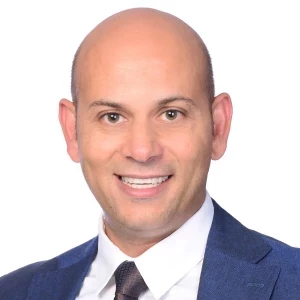Someone told me I should be very succinct when presenting brainstorming ideas (for Eg in ways to decrease costs just say raw material costs..instead of elaborating a little) and another person tailor the ideas more to the case..so instead of saying reduce raw material costs say reduce steel costs (case was about ships). Feels a little bit like conflicting advice, is it more important to be concise or to tailor ideas?
Conflicting advice - McK prep


Hey there,
This is a common misconception that stems from people who are coaching for BCG or BCG (with a proper background) that assume it must be the same for McKinsey as well, when, in fact, it is not. And it has been reiterated ad nauseam over the years.
At the core, McKinsey wants to see creative ideas communicated in a structured manner, the more exhaustive the better.
Your goal should be to come up with a tailored and creative answer that fits the question. The structure / brainstorming should - broadly speaking - follow these three characteristics:
- Broad
- Deep
- Insightful
In a McKinsey interview, you can take up to 5-7 minutes to present your structure, your qualification, and hypotheses. This is due to the interviewer-led format that McK employs. If your answer is not exhaustive enough, the interviewer will start drilling into your answer and ask if you have any other ideas. This usually happens if you
- haven't gone broad or deep enough
- did not explain your ideas well enough for them to stand out (again, you have time here)
The firm wants to see exhaustive and creative approaches to specific problems, which more often than not do not fit into the classic case interview frameworks that were en vogue 10 years ago...
Again, this only applies if everything you say
- adds value to the problem analysis
- is MECE
- is well qualified
- includes a detailed discussion of your hypotheses at the end
The difference in format and way of answering a question is the reason why I recommend preparing very differently for McK interviews vs. other consultancies.
If you want to read more about the specifics of the McK interview, check out this article: https://www.preplounge.com/en/mckinsey-interview
Cheers,
Florian

Hi there,
Both answers complete each other.
Usually when answering you'd try to follow the pyramid principle and give the overall ideas that you have (e.g., there are three areas to decrease cost). Then you'd go into detail into each of them. When I go in detail I would try to be very specific, clear and practical to make the ideas palpable and easy to understand. That's when you would need to tailor the ideas to your specific situation.

Hi there,
I would recommend you always tailor your brainstorming to the case – if you don’t you will give the idea you are re-using predefined structures you learned by heart.
Partially related to your question: before you start brainstorming it is very important you structure an approach and not just go into “laundry list mode” without any structure. You can find an example of how to structure a brainstorming question at the link below:
https://www.preplounge.com/en/consulting-forum/one-mbb-told-me-to-come-back-in-6-months-to-re-interview-structure-weakness-7326
Hope this helps,
Francesco

Hi there!
For brainstorming questions, it is always better to bring structure as opposed to a laundry list of ideas.
for example, after doing a profitability case, if asked how to improve profitability it is better to bucket the ideas into 2: increase revenues or decrease costs.. and then elaborate on each..
Regarding being succint vs using tailored terms, always try to tailor the wording/ terms/ framework to the industry and the case itself as it shows that you are thinking a bit given the case context as opposed to just reciting a framework you know..
being concise is definitely recommended but those 2 are not exclusive..you can be concise and tailor your ideas to the case
hope it helps! Good luck!

The people that gave you advice understood there was something off with your answers. However, they were not able to pin point where and how to improve.
A good answer is structured, customized and specific. And yes, succint (that actually applies everywhere in the interview).
Structured means: “To reduce costs, I would start by looking into the major cost categories, which are x, y and z” or “I will look into the categories where we are underperforming vs. the competitors”. This is both structured and customized, because you pick the categories based on the information you have on the company, industry and overall situation.
Specific means … focused and practical. “Reduce raw materials” is generic (depending on the situation of course). “Reduce steel costs” is focused. But it is not practical, as you are not really answering the question, but instead breaking it down into a “smaller question”. You need to explain HOW you are going to achive that result. “Reduce steel costs, by renegotiating contract terms, for e.g., bundling purchase orders, or by xyz”.
Once you get here, you can move on to the next cost cutting initiative. You don't have to explain the 20 different ways to reduce that specific cost line (or to take 3 minutes to explain that single initiative). That is being succint.

This is not conflicting advice at all!
I can't tell you how many candidates I have that, when I first get them, say ⅓ as much with 3x as many words.
Here, the key is to be precise, concise, and tailored.

Both advice are correct and complement each other.
It is important to be concise AND to tailor ideas.
That said - lets look at the concept a bit deeper:
- The core purpose of the brainstorming exercise is to test your structured-ness in coming up with ideas
- Many candidates become unstructured during brainstorming and start listing out laundry lists.
- This problem exacerbates when asked - “what else?”
- When you present your brainstorming ideas - you must be structured as well. Typically, follow the pyramid approach so that you are prim and concise.
- Many candidates start going deep into ideas before talking about all of them - which is what prompts the “you need to be more concise” comment.
- Finally, the tailoring comment is applicable across all cases and all part of the case interviews. You MUST use “reduce steel costs” instead of “reduce raw material costs”. It indicates you are fully immersed in the case and are thinking in the right manner. If you use generic phrases - it indicates rote learning and poor casing skills.















